As I mentioned last week, the world seems to have turned upside down lately, at least here in central Mexico. After a devastatingly dry summer (our rainy season), now we are having a surprisingly wet winter (our dry season)....
As I mentioned last week, the world seems to have turned upside down lately, at least here in central Mexico. After a devastatingly dry summer (our rainy season), now we are having a surprisingly wet winter (our dry season). On Tuesday my closest birding buddies, and, of late, my regular companions, wanted to go down to Paso Ancho. This town is a thousand meters (three thousand feet) lower than Morelia, and in our state’s Tierra Caliente/Hot Country. It is also in the rain shadow between the Sierra Madre Occidental and the Transvolcanic Range. That means that it gets much less of our summer rains, and is usually bone dry during the winter.
And yet, during the days leading up to our outing, the online weather page kept predicting a possibility of rain for that day. Then, the day before, they moved to a 50% probability for each hour until the late afternoon. This did not seem like a problem to me, because a bit of rain really seems to bring out the birds in such a dry habitat.
But it wasn’t a bit of rain. Instead, this semidesert received a steady drizzle, with moments of real rain, from well before our early-morning arrival until just before our mid-afternoon departure. My last photos, in fact, appear to have been taken through a dense fog, because my lens had fogged up, although the effect was only cosmetic, and reversed with some time in the sun two days later.
One of my companions said that in his region of Mexico, this type of rain is called a “mojapendejos” rain. Pendejo is a rather rude word for someone who is either of low character, or not very smart; and the verb mojar means to make something wet. And indeed, it did rain just enough to keep us consistently wet, but we were too pendejo to seek shelter. So true, so true.
In our defense, toughing it out allowed the four of us to see 83 species in one day, a very respectable total for Paso Ancho. And the drizzly conditions made some of these birds more reluctant to fly away which, combined with the low light, really made their colors pop. Here are a few of the resulting photos. I will clarify that that same low light required an extra amount of editing here at home (up the light levels, drastically increase contrast, and sharpen the images as much as possible). Also, you can actually see evidence of the rain in almost all these shots, as well as lots of twigs, since the birds mostly preferred to stay under cover. Having said that, I hope you enjoy these:

The Red-breasted Chat is one of Paso Ancho’s flagship species, and I am so glad to now know where to reliably find it.

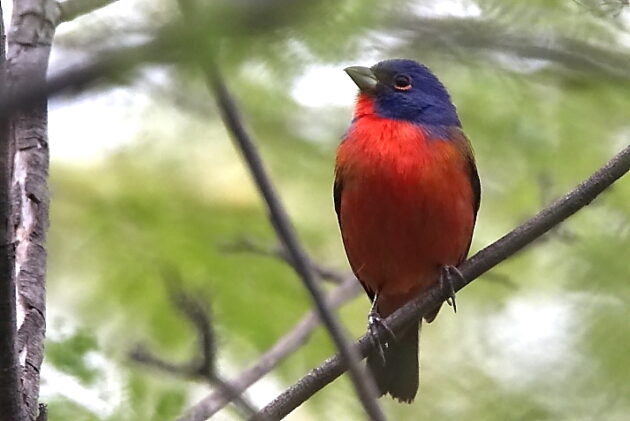
It was a thrill to see this male Painted Bunting so up close. My only regret is that it never turned sideways, to show the other five of its seven colors, as indicated in its Spanish-language name “Sietecolores“.

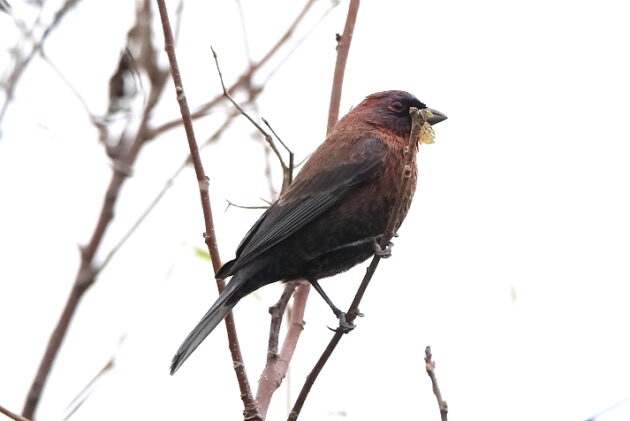
We had a similar experience with this male Varied Bunting.
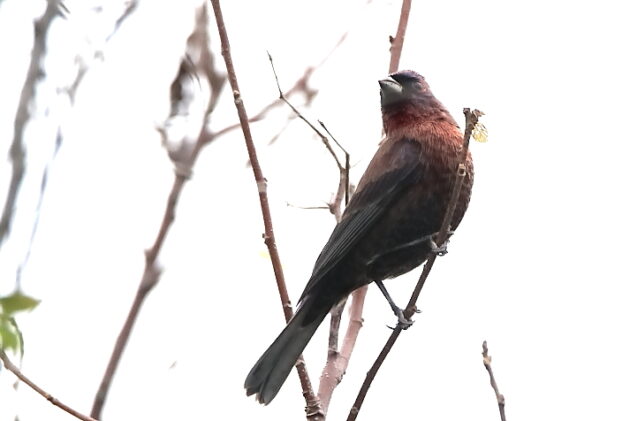

The Orange-breasted Bunting, another Paso Ancho flagship species, did let me down a bit, as only this female allowed me some passable photos.

I got luckier again with this male Elegant Euphonia.

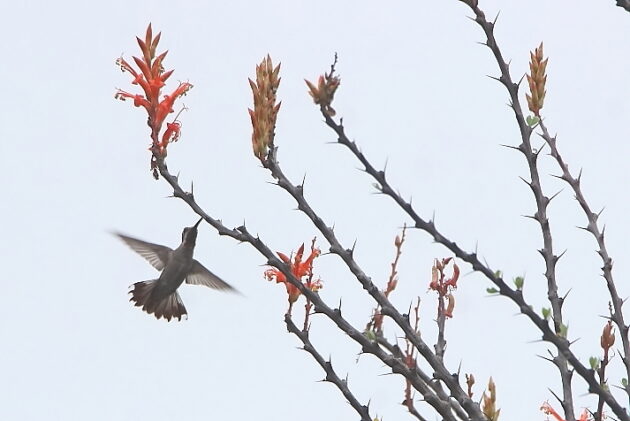
It was an unusually good day for Plain-capped Starthroats, often being harassed by much smaller Lucifer Hummingbirds. The Plain-capped Starthroat is the largest hummingbird in our region, with a bill up to half as long as its body.
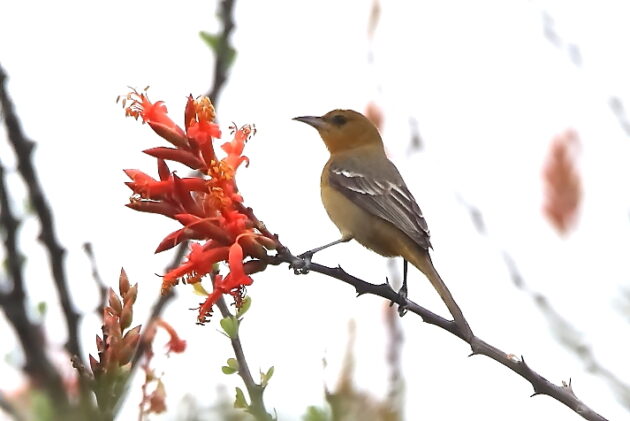
Hummingbirds are not the only birds interested in Paso Ancho’s abundant Fouqueria blooms, as demonstrated by this female Hooded Oriole.

But I was more excited to see Barkeria unifloras blooming everywhere we went. It always seems odd to see orchids blooming in a semidesert habitat. But I’m not complaining.

The post I’m Birding in the Rain, Just Birding in the Rain first appeared on 10,000 Birds.













